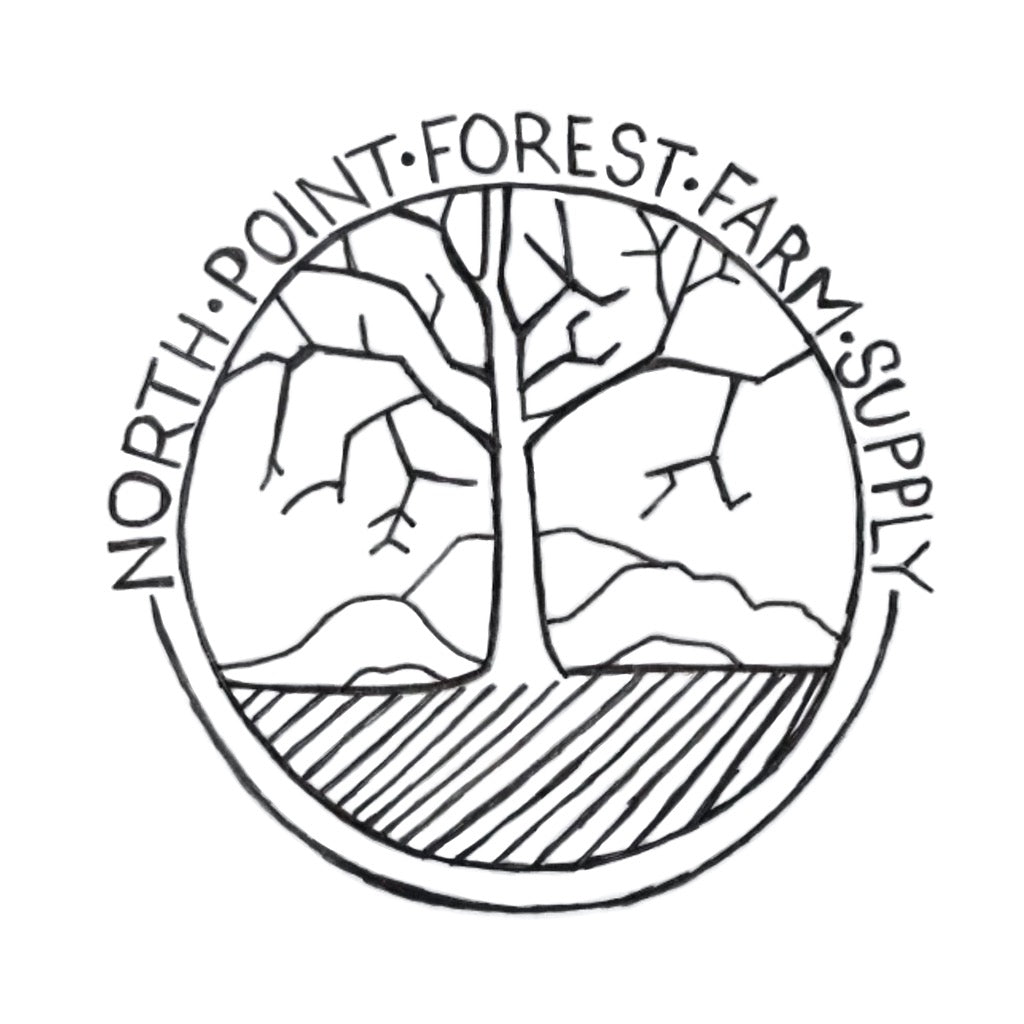Collapsible content
Why agroforestry?
What are bareroot trees & why do you sell them?
"Bareroot" trees are dormant trees shipped in a moist medium ready to plant.
North Point FFS focuses on these because they are;
Affordable. It takes years of care for trees to mature. Bareroot seedlings cost less both to raise and to ship, and we pass those savings on to you. This allows us to support the kind of large-scale planting efforts that will make a meaningful long-term impact on the planet.
Ready for life outside. Unlike trees grown in sterile conditions, our seedlings are grown naturally, outdoors, in compost-rich living soil without use of chemical fertilizers. At great expense, we grow our many of our more difficult to transplant trees using the "Air prune" method. Air pruning works with the tree's taproot and hormonal system to create strong root systems and reduce transplant shock. Because of these practices, our seedling trees are more suited to transplanting as they are ready for life outside.
What techniques does North Point FFS use?
Controlled Crossing:
Hyperlocal but difficult to test in real time. Controlled crossing is the result of seed orcharding. We are currently in the developmental phase of this aspect of the project.
Improved Seed Sourcing:
Genetic variability, highest transplant and growth success. Growth rate variability requires a higher percentage of trees for initial planting with the expectation of culling and loss via predation.
Grafting, Cloning, Root Cutting, Layering:
Identical match leads to predictable trait replication, risk of failure and monocropping. Can be used in moderation rather than industry standard.
Are your trees genetically modified organisms (GMOs)?
We do not genetically engineer our trees.
Tree breeding, like most agricultural products, has utilized genetic modification. Genetically Modified Organisms (GMOs) have had their DNA directly manipulated to achieve a desired outcome. There is controversy among tree breeders, with many seeing direct manipulation of genetic code to be unnecessary or even danger to the tree species and its human/wildlife consumers.
Is there a middle ground? We believe so.
Seedling production creates regionally adaptive trees that are suited to specific bioregions. Rather than depending on a few large labs, genetic advancement can occur at a local level.
What is grafting? Does North Point FFS sell grafted trees?
Although we are a seedling-first organization, we do offer a limited number of grafted, cloned, root cut, and layered trees each year.
Grafting is the fusion of genetic material from two compatible trees, and is one of the ways that tree genetics develops outside of the lab. It is the industry standard for replicating strong performers with desirable traits, since the sexual recombination needed for seedlings results in too much variability.
Grafting is particularly recommended for chestnut orcharding, though there is debate over whether grafted chestnuts are superior. Seed selection in the form of enhanced collection, propagation, and known selection replanting has been found to produce more variation and higher survival rates in non-grafted trees.
There is much that is still unresolved in the debate of grafting versus seedling production, though both sides have strong arguments. The future success of a tree is unknowable, and those expressing certainty – positive or negative – should be met with skepticism.
How do tree ages work?
Trees are considered a year old after their first growing season, or during the Fall of the year they were planted. Second year trees are marked at the start of the following Fall, after they have gone through two growing seasons.
These trees have been overwintered and field grown, and will be significantly larger. They will also be more costly, to reflect the time and labor invested in overwintering. Second year plantings are more likely to reduce the transplant shock experienced by younger and older trees.
Trees older than two years are only available from us by special request.
